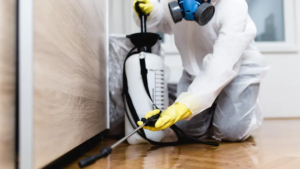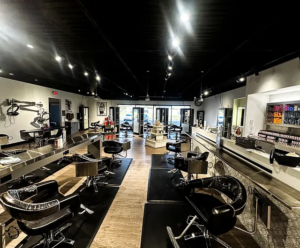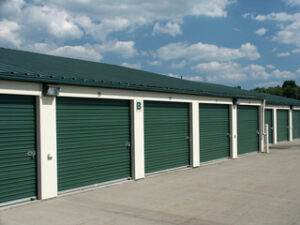When people think of rural living, many things come to mind. One of them is septic tanks.
A septic tank is the collection point for wastewater in homes without city sewer systems. Solids sink to the bottom, and bacteria that lack oxygen (anaerobic) digest them, while scum floats to the top. Contact Septic Tank Armadale now!

When you dream of moving out of the city and into a rural area, septic systems are likely to be something you think about. After all, they allow you to have the quiet and privacy you want without having to pay for a city sewer system. While they may save you money in the long run, septic systems can be difficult to care for and repair if you aren’t prepared. So before you buy a house with a septic tank, here’s what you need to know about how they work.
A septic tank is typically made of concrete or high-quality plastic. They are designed in various sizes to fit different homes. Once waste enters the tank, it is divided into three layers by the inlet and outlet pipe. The first layer is the scum layer, which contains any fats, oils, and greases. The second layer is the wastewater, which is primarily water. The third and final layer is the sludge layer, which is solid waste that sinks to the bottom of the tank.
As solids settle and decompose, the sludge layer gradually decreases in volume. This allows the scum layer and wastewater to flow out of the septic tank into the drain field. During this process, the solids are broken down into water, carbon dioxide, and smaller portions of indigestible material. The bacteria then break these materials down further into even smaller particles. As the solids continue to decompose, they create a black biological mat that lines the walls of the tank and leach field trench.
The key to a healthy septic system is to be mindful of what you flush down your drains. Never pour cooking oil, non-flushable wipes (like baby or makeup removal), cat litter, cigarette butts, feminine hygiene products, diapers, pharmaceuticals, paint, and chemical solvents down your drains. These items can kill the bacteria that help your septic system work effectively and could lead to costly repairs down the line. In addition, always keep the grass mowed above your drainage field and keep trees and bushes clear of the area to prevent blockages.
Maintenance
A septic tank is a settling chamber that allows time for solids and sludge to separate out from the wastewater. This enables clear liquid to flow into the drainfield for further filtration and absorption. When this tank isn’t pumped regularly, solids can build up near the baffles and wash into the drainfield, where they will eventually clog the pipes. This can cause sewage to back up into the home, and it will cost thousands of dollars to repair or replace the system.
There are a few ways to prevent these problems. First, be sure to have your septic system inspected regularly by an experienced septic professional. They should note the condition of the tank and any repairs in their report, which can help you plan for future maintenance. Also, have a map or other means of finding your tank and system components in case you need to access them for yard work or home projects. Keep these records and any inspection reports in a safe place and make them available to future homeowners if you decide to sell your property.
Another way to prevent problems is to not use additives to your septic system that claim to improve its performance. These chemicals are generally not safe for septic tanks and can cause serious damage. Instead, use natural cleaners that won’t harm your septic system or the environment.
The last way to prevent problems is to pump your septic tank regularly. This is especially important if you have a large household, as this will ensure that the sludge layer is kept away from the baffles. This will help you avoid clogging the drainfield, which can cost tens of thousands of dollars to repair or replace.
In addition, don’t park or drive vehicles or equipment over your septic system or drain field. This can compact the soil and damage the pipes. Also, don’t plant trees or other deep-rooted plants over the absorption field. Lastly, it is a good idea to have 8 to 12 inches of mulch around the tank and drain field to keep the soil moist and prevent erosion.
Repairs
When your septic tank or system fails, it can cause a lot of problems. The sewage will back up into your home, creating an unpleasant odor and possibly damaging the plumbing. It may also cause stains and water damage, not to mention health issues such as bacterial infections. Keeping up with your septic tank maintenance and having regular inspections can help keep your system running smoothly.
Septic tanks have many components that can wear out and need repair. Some of the most common signs that your tank is in need of repairs include puddles or wet areas over your septic tank, gurgling in other household drains, or a septic tank alarm going off. The septic tank itself may also need to be pumped more often than usual, which can lead to a pump failure.
During a septic system inspection, the technician will check for many of these signs of problems. They will look at the tank for any cracks or holes, as well as the baffles and motor inside. They will also inspect the leach field for signs of past ponding, probe the area to see how much effluent is reaching the absorption area, and dye the system when necessary to identify problem areas.
The cost of septic tank repairs can vary, depending on the nature of the issue and the extent of the work required. For example, a broken lid might only require a quick and cheap repair, but an emergency situation causing raw sewage to flow into the house could require a more costly replacement of your septic tank’s inlet baffle or effluent filter.
Plastic septic tanks are usually the least expensive to repair, with costs ranging from $150 to $2,000. However, these can be easier to crush and break, and they may need more frequent repairs due to the soil conditions in which they are installed. Concrete tanks are more expensive to repair, but they offer superior durability and resistance to tree roots.
Repairing a septic system that is causing foul odors in the house can cost anywhere from $250 to $5,000, depending on the cause of the smells. This could be a simple clog preventing waste from draining, or it could mean the septic tank is full and needs to be pumped. Either way, the septic system should be repaired as soon as possible to prevent permanent damage to your home.
Replacement
Septic tanks provide the means to treat waste water in homes that are not connected to municipal sewer lines. The system allows for sewage and waste matter to be absorbed into the soil rather than being released into lakes, rivers, or groundwater supplies where it can cause disease or pollute the environment. The system has a holding chamber to hold solid waste particles, a clarifying chamber where liquids and gases separate from the waste, and an overflow chamber that stores completely cleaned wastewater until it can be discharged.
A septic tank can be repaired or replaced when it becomes damaged beyond repair. This is especially true if the tank is overfilled, causing sewage to overflow into the home. It is also time to consider a replacement when the drainfield has become saturated with water or contaminated. A wet, soggy area that is green or spongy may develop over the drainfield or near the tank, and foul odors are another sign of a failing septic system.
When it comes to septic tank maintenance, a regular schedule of pumping and periodic inspections should be followed. This will allow the service provider to spot small issues that can be corrected before they lead to bigger problems. In addition, a septic tank filter should be replaced at least once per year to ensure that the septic system is functioning properly.
A filter is a plastic or concrete component that adds fibrillation to the wastewater before it enters the drain field or leach field. This helps to reduce solid materials from reaching the drain field or leach field, and it should be clean regularly. A broken or leaking septic tank lid can be replaced for as little as $150, but a full lateral line replacement in rock or clay soil could cost up to $20,000.
If you have a septic system, be sure to be conservative with water use to prevent overworking the system and straining the wastewater treatment process. This means spacing out showers, washing machines, and dishwasher loads to give the septic system time to handle each load. Also, only put septic-safe toilet paper down the drain, and make sure that chemicals and disinfectants do not enter the system.








